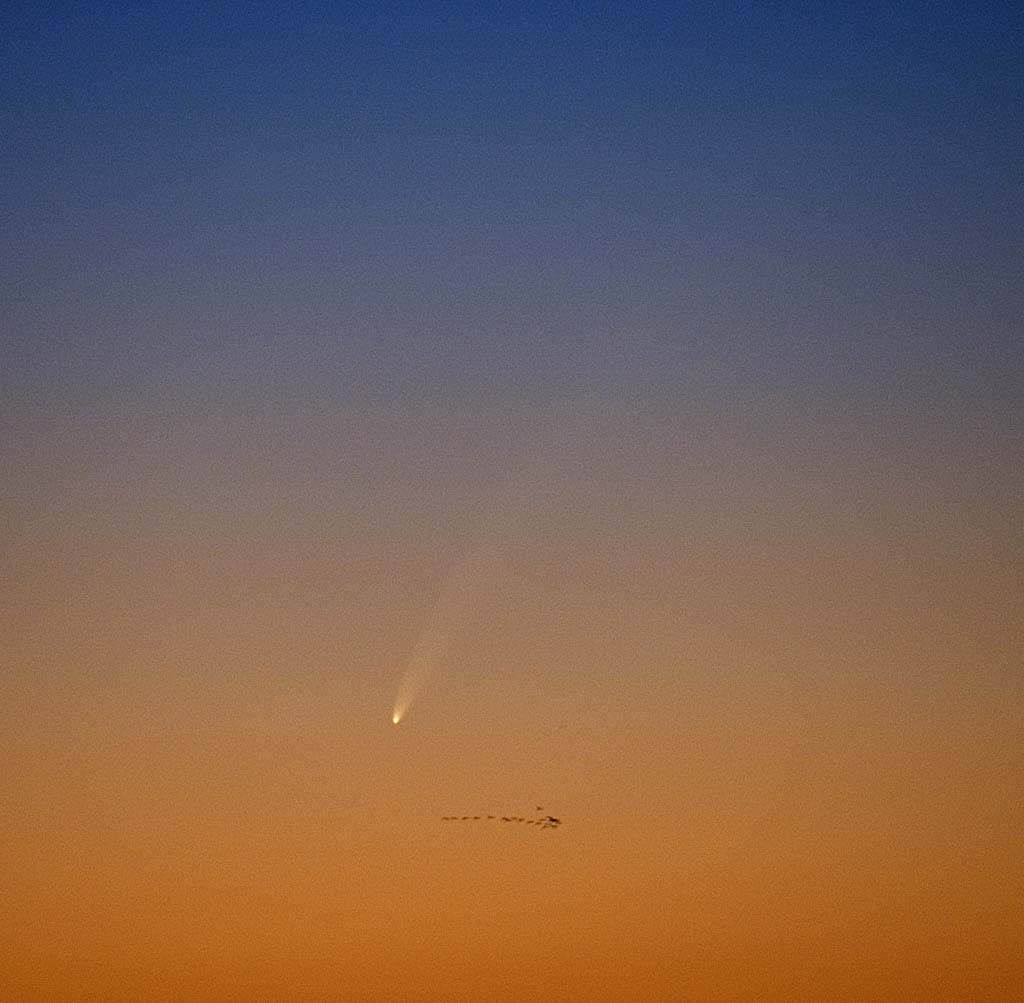
Jan 11, 2007

This is approximately what the comet looked at its best through binoculars. The picture was taken with a Nikon D70 digital camera and a 200mm telephoto lens. As I was taking the picture, a flock of Canada geese was flying past.
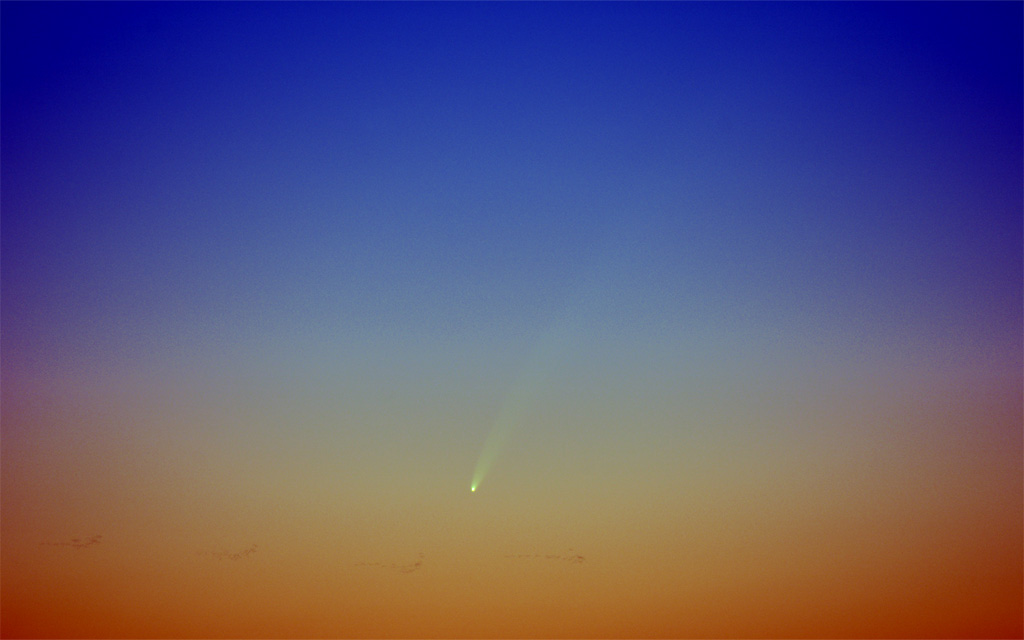
This is a composite made from five individual exposures with a D70 camera and 200 mm telephoto lens. During the time I was making the pictures, a flock of geese flew by and were recorded in four of the images. Accordingly, they appear as four flocks in the composite image. The greenish tint of the comet is the result of the camera's internal color-balancing routines. To the eye, the comet (which was seen though a long atmospheric path) appeared yellowish.
Jan 12, 2007
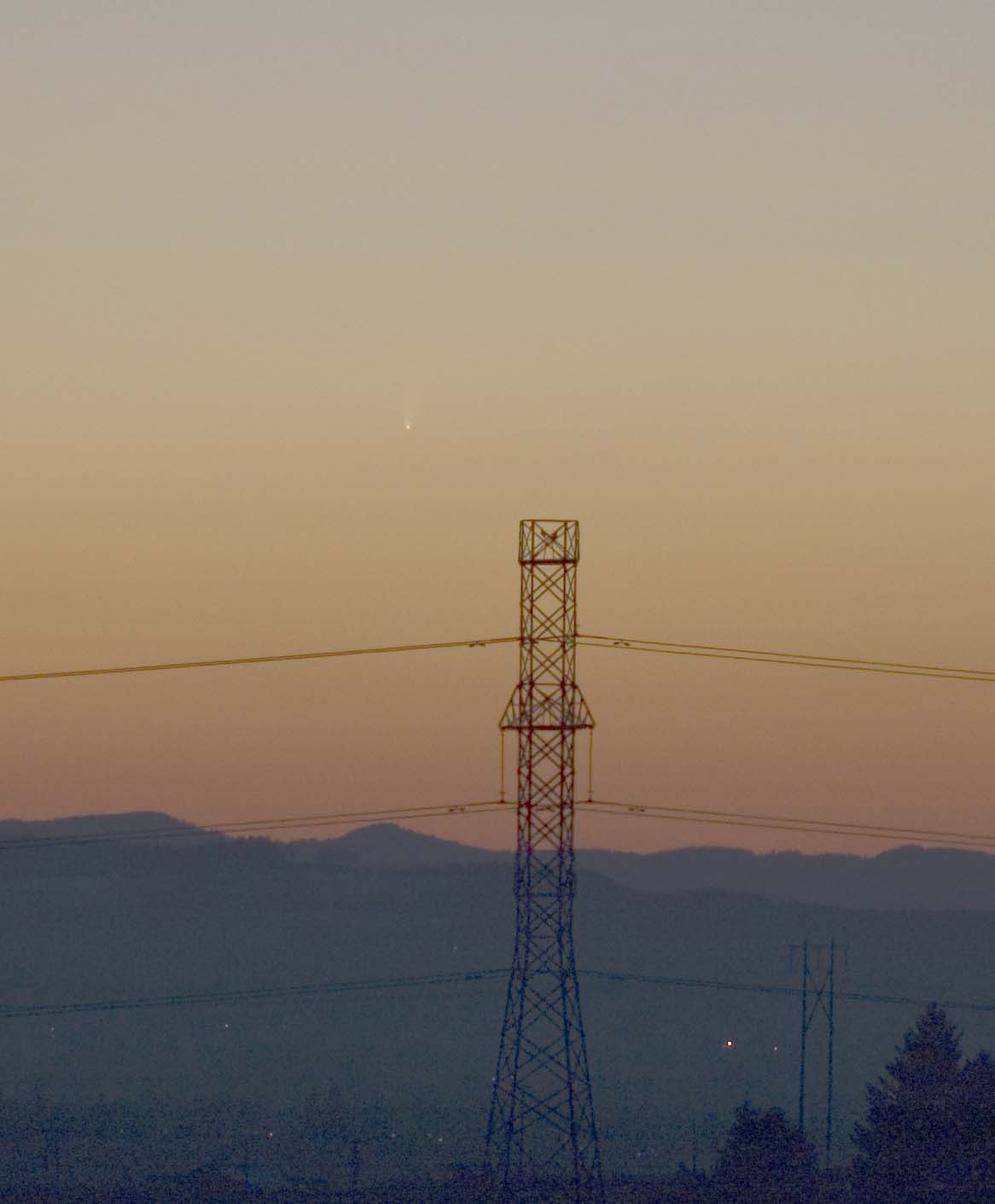
On Jan 12, the comet was lower in the sky at sunset and set earlier. so the best viewing occurred when the sky was brighter. This picture is a pretty good representation of the naked-eye appearance of the comet.
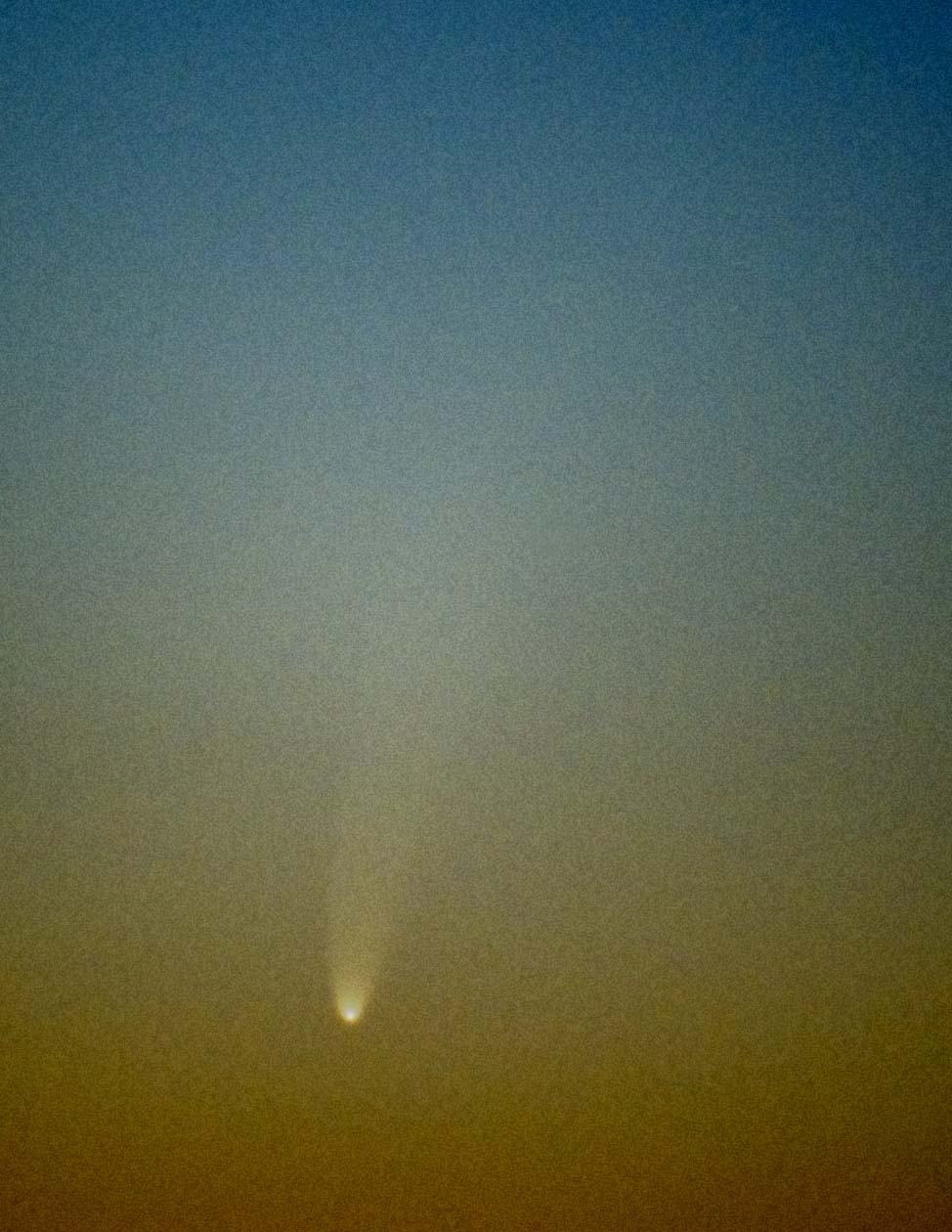
This picture is a pretty good representation of the appearance of the comet through a low-power telescope. I took it with a 500 mm telephoto lens. The nucleus appears star-like, enveloped by a nice "parabolic" arc. The tail extends as good part of the distance toward the top of the picture, but it's lost in noise and the brightness of the sky.
Jan 13, 2007
It was cloudy this day.
Jan 14, 2007
This is the day that the comet was closest to the Sun, and under good conditions, it would have been visible in the daytime sky. By noon, the sky appeared blue, but when you looked toward the Sun, you saw mottled haze. Standing in the shadow of a chimney to block the direct Sun, I searched for any sign of the comet with binoculars. None was visible. Since this comet was more readily visible on my contrast-stretched photographs than it was by eye or seen in binoculars, I took two five-exposure series centered approximately 6 degrees west and 2 degrees south of the Sun's location. The second series, taken at 12:52 pm PST is shown below.
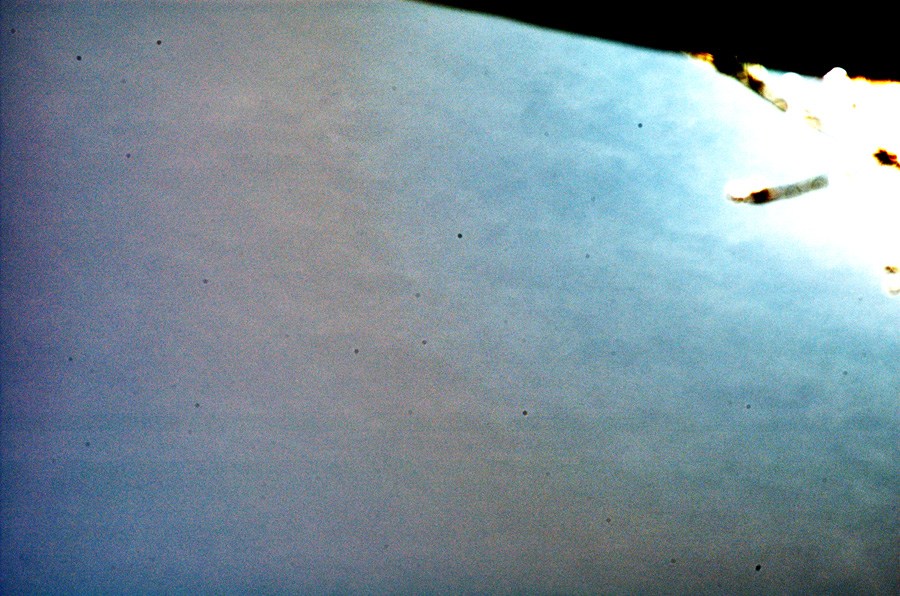
This is a composite of five raw frames taken with a D70 and 200mm lens. I used AIP4Win's Sky Background Fixer tool to remove the intensity gradient outward form the Sun, and then stretched the contrast by a factor ten. The cloud mottling in clearly visible, as are numerous small dust specks. You can also see reddish nacreous ring (not sure if that's the correct term) around the Sun. This image contains a number of "suspicious" comet-like spots, but none that I would claim to be the comet.
Jan 15, 2007
With the comet now headed south, it was time to look for other image sources. The best images that I have found are being taken by the SECCHI H1 camera aboard the STEREO spacecraft, now located beyond the moon's orbit. I processed the 32-bit image data using AIP4Win. The data was scaled using the log10 math function, and a mild unsharp mask was applied to enhance structure in the tail.
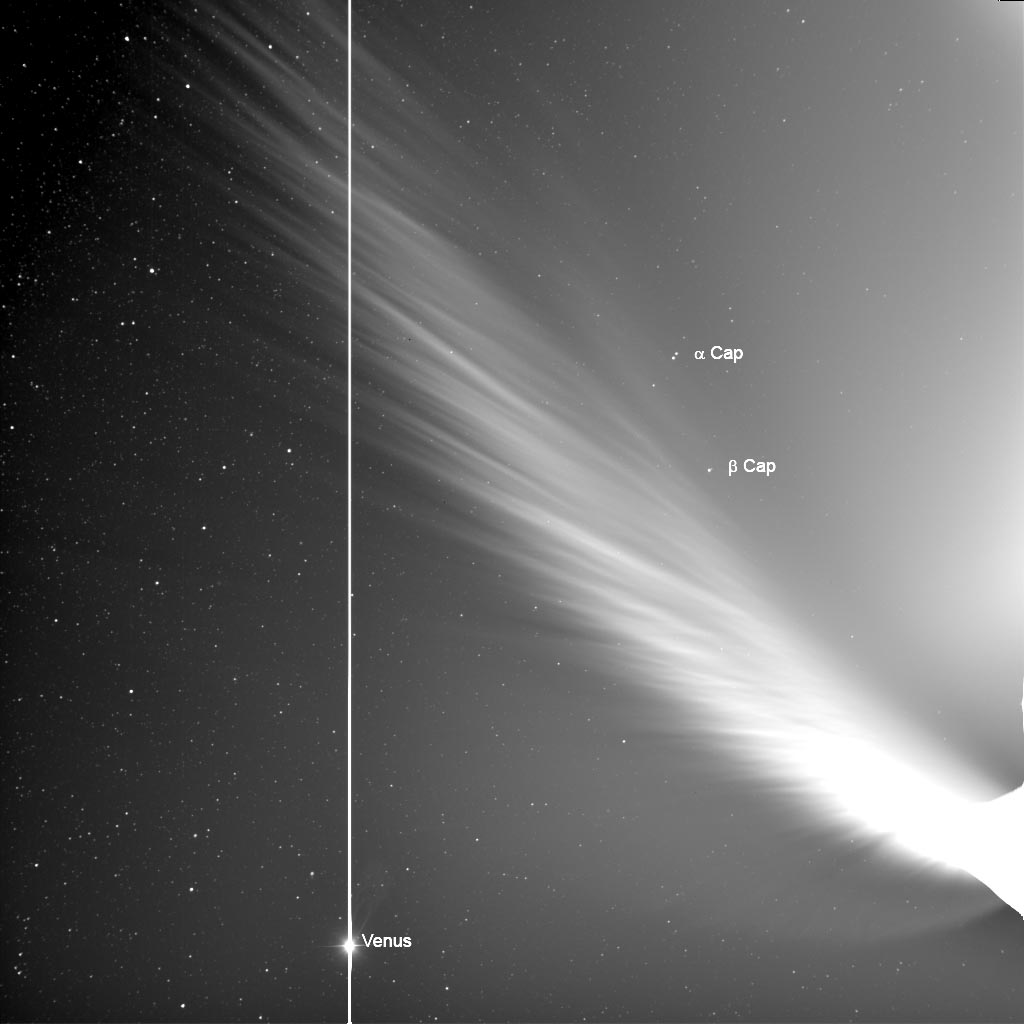
For orientation, I have labeled Venus and alpha and beta Capricorni. The big streak is blooming in the CCD camera, and the nucleus and coma of the comet are grossly overexposed. The image was taken Jan 15 at 08:00 UT. In it, the tail extends more than 25 degrees.